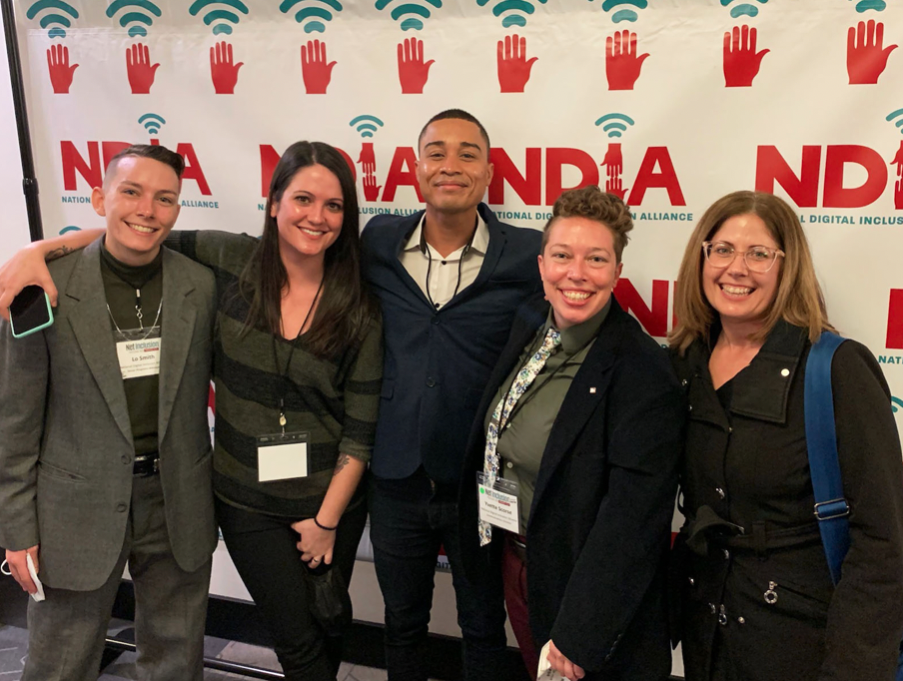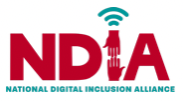Broadband Is Just One Piece of the Bigger Digital Equity Puzzle

During the pandemic, we saw a lot of temporary solutions to digital inequities, from quickly distributing hotspots to free access to broadband for school-aged children, to handing out tablets to older adults.
Unfortunately, too many of these one-off tactics end up being wasted investments. Why? We need more than available broadband service to bridge the digital divide. Holistic solutions address affordability of broadband service and devices along with access to digital skills training and tech support.
What Is Digital Inclusion?
The National Digital Inclusion Alliance (NDIA) community defines it:
Digital Inclusion refers to the activities necessary to ensure that all individuals and communities, including the most disadvantaged, have access to and use of Information and Communication Technologies (ICTs). This includes five elements:
1. Affordable, robust broadband internet service;
2. Internet-enabled devices that meet the needs of the user;
3. Access to digital literacy training;
4. Quality technical support; and
5. Applications and online content designed to enable and encourage self-sufficiency, participation, and collaboration.
Digital Inclusion must evolve as technology advances. Digital inclusion requires intentional strategies and investments to reduce and eliminate historical, institutional, and structural barriers to access and use technology.
Broadband solutions must involve all aspects of digital inclusion to be successful. This means many entities – businesses, community-based organizations, local governments, and people with lived experience – will have the most success when they work together crafting solutions.
Now’s the Time: Oregon’s State Digital Equity Plan
Oregon is receiving funding from the National Telecommunications and Information Administration (NTIA) to create its state digital equity plan during 2023. This will be one of the most important times to influence digital equity. It’s the first step in the Digital Equity Act, which is part of the Infrastructure Investment and Jobs Act (IIJA).
Local Participation in the State Plan
Individuals and organizations, including from rural, urban and Tribal areas of the state, can add value to Oregon’s digital equity plan, led by the Oregon Broadband Office. Consider the following:
- Participate in Oregon’s engagement activities defining the future of digital equity in the state. Provide ideas/input for assessing impact and creating measurable objectives
- Asset Mapping:
- Make your state aware of any existing digital inclusion assets
- Conduct your own local asset mapping and share with the state
- Identify barriers for populations identified in the legislation (those living in low-income households or rural areas, older adults, veterans, racial or ethnic minorities, and individuals with disabilities, language barriers, or who are incarcerated).
- Collect data about access and use of technology in your location
- Support the state in its collection of data
- Direct the state to populations in need of affordable broadband service, devices, and digital skills training
- Provide ideas/input to the state on its implementation strategies for the digital equity plan. This can occur through the initial engagement sessions or through the public comment period for the plan (as required by statute) or directly with the state.
What’s Next? Where Can I Learn More?

For ongoing information on the Digital Equity Act and proven solutions to move toward digital equity, join the NDIA community. Membership starts at free levels for government entities, Tribes, and nonprofits, and there are opportunities for corporate supporters to join.
Now is a great time to get ready for Digital Inclusion Week, October 4-7. This is the perfect week to get involved in digital inclusion work and make your support known. Get more information at digitalinclusion.org.
By Yvette Scorse
Communications Director
National Digital Inclusion Alliance


Advertisement